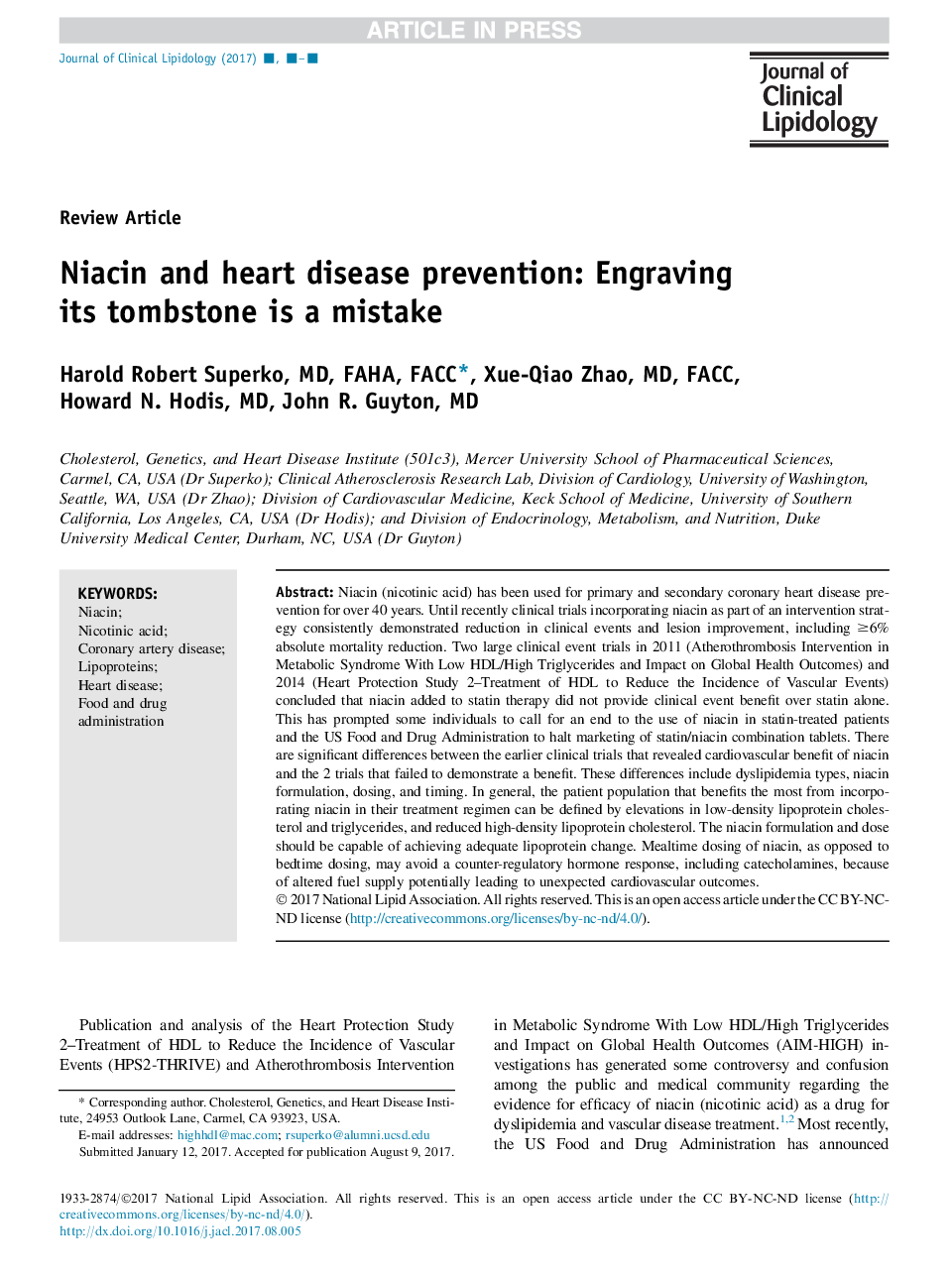| Article ID | Journal | Published Year | Pages | File Type |
|---|---|---|---|---|
| 8668520 | Journal of Clinical Lipidology | 2017 | 9 Pages |
Abstract
Niacin (nicotinic acid) has been used for primary and secondary coronary heart disease prevention for over 40 years. Until recently clinical trials incorporating niacin as part of an intervention strategy consistently demonstrated reduction in clinical events and lesion improvement, including â¥6% absolute mortality reduction. Two large clinical event trials in 2011 (Atherothrombosis Intervention in Metabolic Syndrome With Low HDL/High Triglycerides and Impact on Global Health Outcomes) and 2014 (Heart Protection Study 2-Treatment of HDL to Reduce the Incidence of Vascular Events) concluded that niacin added to statin therapy did not provide clinical event benefit over statin alone. This has prompted some individuals to call for an end to the use of niacin in statin-treated patients and the US Food and Drug Administration to halt marketing of statin/niacin combination tablets. There are significant differences between the earlier clinical trials that revealed cardiovascular benefit of niacin and the 2 trials that failed to demonstrate a benefit. These differences include dyslipidemia types, niacin formulation, dosing, and timing. In general, the patient population that benefits the most from incorporating niacin in their treatment regimen can be defined by elevations in low-density lipoprotein cholesterol and triglycerides, and reduced high-density lipoprotein cholesterol. The niacin formulation and dose should be capable of achieving adequate lipoprotein change. Mealtime dosing of niacin, as opposed to bedtime dosing, may avoid a counter-regulatory hormone response, including catecholamines, because of altered fuel supply potentially leading to unexpected cardiovascular outcomes.
Keywords
Related Topics
Health Sciences
Medicine and Dentistry
Cardiology and Cardiovascular Medicine
Authors
Harold Robert MD, FAHA, FACC, Xue-Qiao MD, FACC, Howard N. MD, John R. MD,
